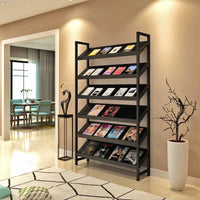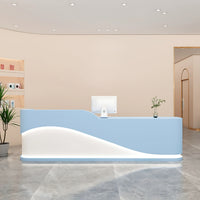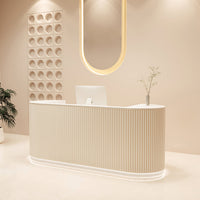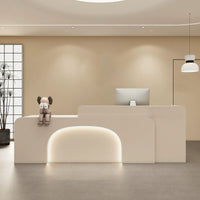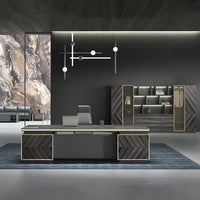How Can I Run Data Cables Under a Conference Table?
kaguyasuContent Menu
● Understanding the Importance of Cable Management
>> Benefits of Proper Cable Management
● Planning Your Cable Run
>> Assessing Your Conference Table Setup
>> Measuring and Mapping
● Tools and Materials Needed
● Step-by-Step Guide to Running Data Cables Under a Conference Table
>> Step 1: Prepare the Table
>> Step 2: Use Cable Management Accessories
>> Step 3: Route the Cables
>> Step 4: Connect and Test
>> Step 5: Finalize and Conceal
● Tips for Maintaining Cable Management
>> Regular Inspection
>> Keep Documentation
>> Avoid Overloading
● Common Challenges and How to Overcome Them
>> Limited Space Under the Table
>> Multiple Cable Types
>> Interference Issues
● Frequently Asked Questions
>> 1. Can I run power and data cables together under the conference table?
>> 2. What is the best type of cable for conference room networking?
>> 3. How do I avoid damaging cables when drilling holes in the table?
>> 4. Are there wireless alternatives to running data cables?
>> 5. How can I future-proof my cable management setup?
Running data cables under a conference table is a common requirement in modern office setups to ensure a clean, organized, and functional workspace. Proper cable management not only improves aesthetics but also enhances safety by reducing tripping hazards and protecting cables from damage. This comprehensive guide will walk you through the best practices, tools, and techniques for running data cables under a conference table efficiently and professionally.

Understanding the Importance of Cable Management
Before diving into the practical steps, it's essential to understand why managing data cables properly under a conference table matters.
Benefits of Proper Cable Management
- Safety: Prevents tripping hazards and reduces the risk of electrical shorts or damage to cables.
- Aesthetics: Keeps the conference room neat and professional-looking.
- Functionality: Makes it easier to add, remove, or troubleshoot cables without disrupting the entire setup.
- Durability: Protects cables from wear and tear, extending their lifespan.
Planning Your Cable Run
Assessing Your Conference Table Setup
Start by examining the conference table and the room layout. Consider the following:
- Table Size and Shape: Rectangular, oval, or custom shapes may affect cable routing.
- Cable Types and Quantity: Identify the types of cables (Ethernet, HDMI, power, USB) and how many you need to run.
- Access Points: Determine where devices will connect and where cables will enter or exit the table.
- Existing Infrastructure: Check for built-in cable management features like grommets, cable trays, or raceways.
Measuring and Mapping
Measure the distance from the data source (e.g., wall outlet, network switch) to the table and between devices on the table. Draw a simple map to plan the cable routes, noting any obstacles or furniture that might interfere.
Tools and Materials Needed
Gather the necessary tools and materials before starting the installation:
- Data cables (Cat5e, Cat6, HDMI, USB, etc.)
- Cable ties or Velcro straps
- Cable raceways or conduits
- Cable clips or adhesive mounts
- Drill and drill bits (for making holes if needed)
- Fish tape or cable puller
- Cable labels
- Measuring tape
- Screwdriver and screws
- Wire cutters and strippers
Step-by-Step Guide to Running Data Cables Under a Conference Table
Step 1: Prepare the Table
- Inspect the Table: Check if the table has built-in cable management features such as cable grommets or channels.
- Create Access Points: If the table lacks cable holes, use a drill with an appropriate hole saw bit to create neat openings for cables to pass through. Position these holes near the edges or center, depending on device placement.
Step 2: Use Cable Management Accessories
- Install Cable Raceways: Attach cable raceways or conduits underneath the table to hold and protect cables. These can be mounted using screws or adhesive strips.
- Attach Cable Clips: Use cable clips to secure cables along the underside of the table, preventing sagging or tangling.
Step 3: Route the Cables
- Start from the Source: Begin running cables from the data source or wall outlet toward the table.
- Use Fish Tape: For longer or more complex routes, use fish tape to pull cables through tight spaces or conduits.
- Follow the Plan: Stick to the mapped route, avoiding sharp bends or tight loops that can damage cables.
- Separate Power and Data Cables: To prevent interference, keep power cables and data cables separated by at least a few inches.
Step 4: Connect and Test
- Terminate Cables Properly: Attach connectors (RJ45, HDMI plugs, etc.) securely at both ends.
- Label Cables: Use cable labels to identify each cable for easy troubleshooting later.
- Test Connections: Verify that all cables are functioning correctly with appropriate testing tools (e.g., cable testers, network analyzers).
Step 5: Finalize and Conceal
- Bundle Excess Cable: Coil any extra cable length neatly and secure with Velcro straps.
- Conceal Cables: Use cable covers or floor raceways to hide cables running from the table to the wall.
- Clean Up: Remove any debris, dust, or leftover materials from drilling or installation.
Tips for Maintaining Cable Management
Regular Inspection
Periodically check cables for wear, loose connections, or damage. Replace any faulty cables immediately.
Keep Documentation
Maintain a diagram or list of cable routes and connections to facilitate future upgrades or repairs.
Avoid Overloading
Do not overload cable trays or raceways; leave room for additional cables if needed.
Common Challenges and How to Overcome Them
Limited Space Under the Table
If the table has limited clearance, opt for low-profile cable raceways and use flat cables where possible.
Multiple Cable Types
Use color-coded cables or labels to differentiate between data, power, and audio cables.
Interference Issues
Keep data cables away from electrical wiring and use shielded cables to minimize interference.
Frequently Asked Questions
1. Can I run power and data cables together under the conference table?
It is best to keep power and data cables separated by at least a few inches to avoid electromagnetic interference that can affect data transmission quality.
2. What is the best type of cable for conference room networking?
Cat6 cables are commonly recommended for conference rooms due to their higher bandwidth and better performance over longer distances compared to Cat5e.
3. How do I avoid damaging cables when drilling holes in the table?
Use a drill with a hole saw bit sized appropriately for your cables or grommets, and drill slowly to avoid splintering. Always wear safety gear and clamp the table securely.
4. Are there wireless alternatives to running data cables?
Wireless solutions like Wi-Fi and Bluetooth can reduce cable clutter but may not provide the same reliability and speed as wired connections, especially for video conferencing or large data transfers.
5. How can I future-proof my cable management setup?
Install extra conduits or raceways with spare capacity, use high-quality cables, and keep detailed documentation of your cable layout for easy upgrades.

---
Hot Tags: China, Global, OEM, private label, manufacturers, factory, suppliers, manufacturing company



